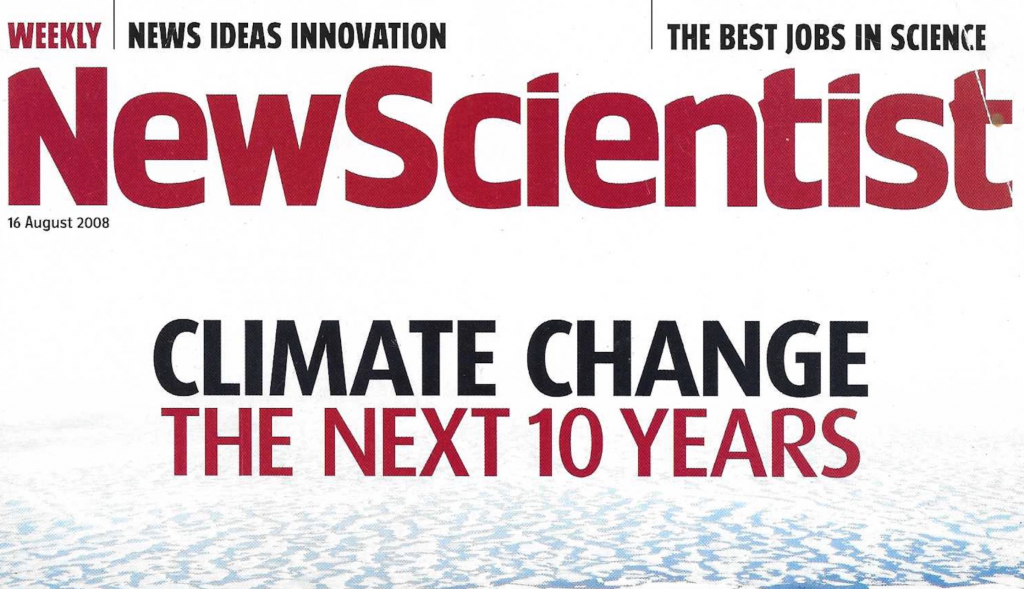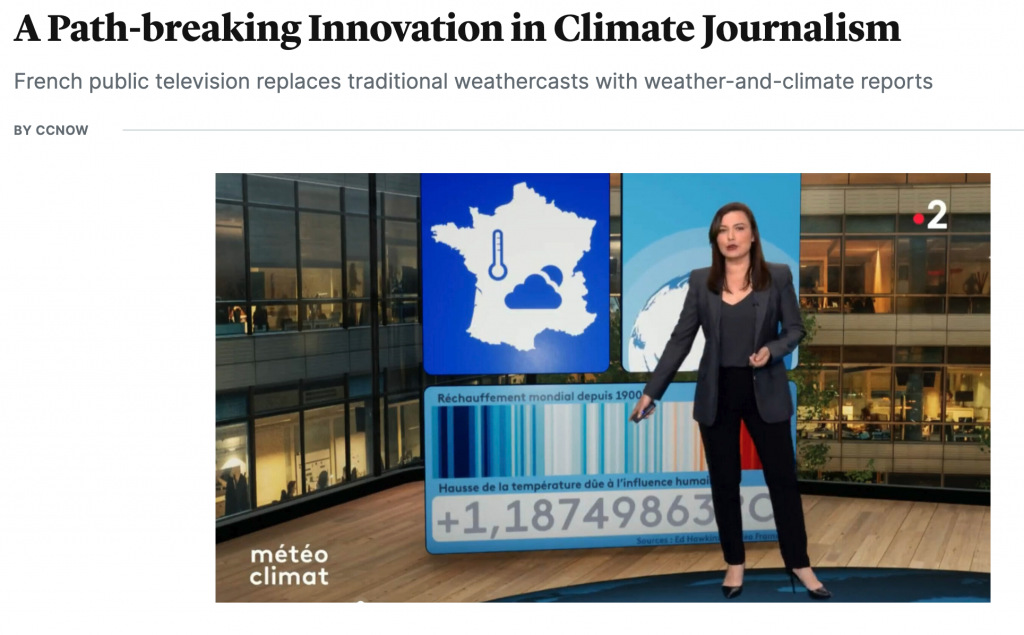How eco-journalists promote the 'weather is climate' scam
When did journalists start confusing weather and climate predictions? A long time ago it seems.
Consider the New Scientist of August 2008 which asked, “What’s going to happen to the climate over the next ten years or so?” -- even though climate change is considered a 30 year assessment. It pointed out that short-term predictions are harder than long-term ones, - which, might I suggest, is due to the difference between pesky, unpredictable weather and its smoothed, time-averaged derivative – climate.

It adds that some groups have published short-term forecasts (perhaps another name for these could be long-range ‘weather forecasts.’) It then makes its own calamitous prediction: “Surface temps will start to rise again by 2014 and then go into overdrive.” They didn’t.
In the same issue Michael Mann said that Atlantic hurricanes will intensify. They didn’t either. In November 2012 New Scientist predicted ice-free summers in a decade and sea-levels rising faster than expected. Neither materialised. Then there is the National Geographic which in November 2015 had “The Climate Issue.” It’s editorial quotes Bill McKibben saying, “This year will be the turning point.” It wasn’t. What a problem these short-term “climate” forecasts are.
Predictions! They often seem immune to the logic of science in that when they are right (seldom and perhaps by chance) they are indicative of something real, but when they are wrong they are indicative of uncertainties. They are also endlessly renewed irrespective of their poor track record.
In January 2018 the UK Met Office said that the next five years may see the 1.5°C Paris limit exceeded. “It is now possible that continued warming from greenhouse gases along with natural variability could combine so we temporarily exceed 1.5°C in the next five years,” said Stephen Belcher of the Met Office. That didn’t happen, but five years later it’s the same prediction, only this time with a little bit more ambiguity as befits the progress of a settled science. Now the World Metrological Organisation’s forecast says that between now and 2027 there is a 66% chance of exceeding 1.5°C. It adds that breaching this limit for just one year would be worrying, saying that it would show global warming is accelerating!
Later on in the same press release the 66% probability becomes 98%. But what does 98% actually mean? How is it statistically different from a 100% certainty, except for the minute statistically irrelevant wriggle room it leaves for a politically essential excuse if the prediction fails again? Then the WMO says that if the 1.5°C threshold were to be breached we would have to wait 20 years to be sure it wasn't due to a strong El Nino event, i.e. driven by natural variability! But didn’t they say earlier that breaching the limit for just one year would indicate accelerating global warming and not natural variability?
In reporting these contradictory numbers, predictions and statements habitually verbatim, most environmental journalists don’t ever scrutinise them. If financial organisations or treasury officials played around with predictions like this they would almost certainly come in for a dose of criticism and further probing from proper journalists.
Climate Changes Every Day
The Covering Climate Now website (organised by journalists for journalists) has produced what scholars should study as a classic case of mistaking weather and climate.
They say that, faced with a 'climate emergency,' journalists should not keep reporting news the same old way. To this end they provide helpful articles on best practices in climate reporting, including denying a platform to 'deniers' who are essentially anyone who disagree with them. They have over 500 news affiliates including, the Columbia Journalism Review, CBS, NBC, The Guardian, Nature and Scientific American.

They report about a “path-breaking innovation” in climate journalism launched this March in France, where the national public broadcaster, France Télévisions, is “dramatically changing how it reports on weather.” By now you might be wondering what a website concerning communicating climate might be doing mention a change in weather forecasts?
The daily weather report is dead, long live the daily climate report.
According to Alexandre Kara, the editor-in-chief of France Télévisions, “The goal is to “not just to say, ‘It will be sunny tomorrow or it will rain,’ but to explain why.” “This is what leadership in climate journalism looks like,” says Covering Climate Now which salutes France Télévisions and urges our colleagues everywhere to ponder their inspiring example.”
Just look at that global temperature ticker. What a scientific absurdity. That global temperature is “calculated” in real time to eight decimal places, so viewers of the inaugural March 13 broadcast could see the dashboard first register 1.18749861°C above the pre-industrial level and then - after 37 seconds - click one digit more to 1.18749862 °C and then - after 2 minutes and 28 seconds - eventually reaching 1.18749873 °C.
Instead of calling out this appalling example of climate journalism Covering Climate Now praises it, showing no understanding whatsoever about essential climate parameters or indeed about journalism. French TV viewers will be intentionally confused between weather forecasts and climate change, just like climate activists at Covering Climate Now, and it seems many others.
Feedback: david.whitehouse@netzerowatch.com
